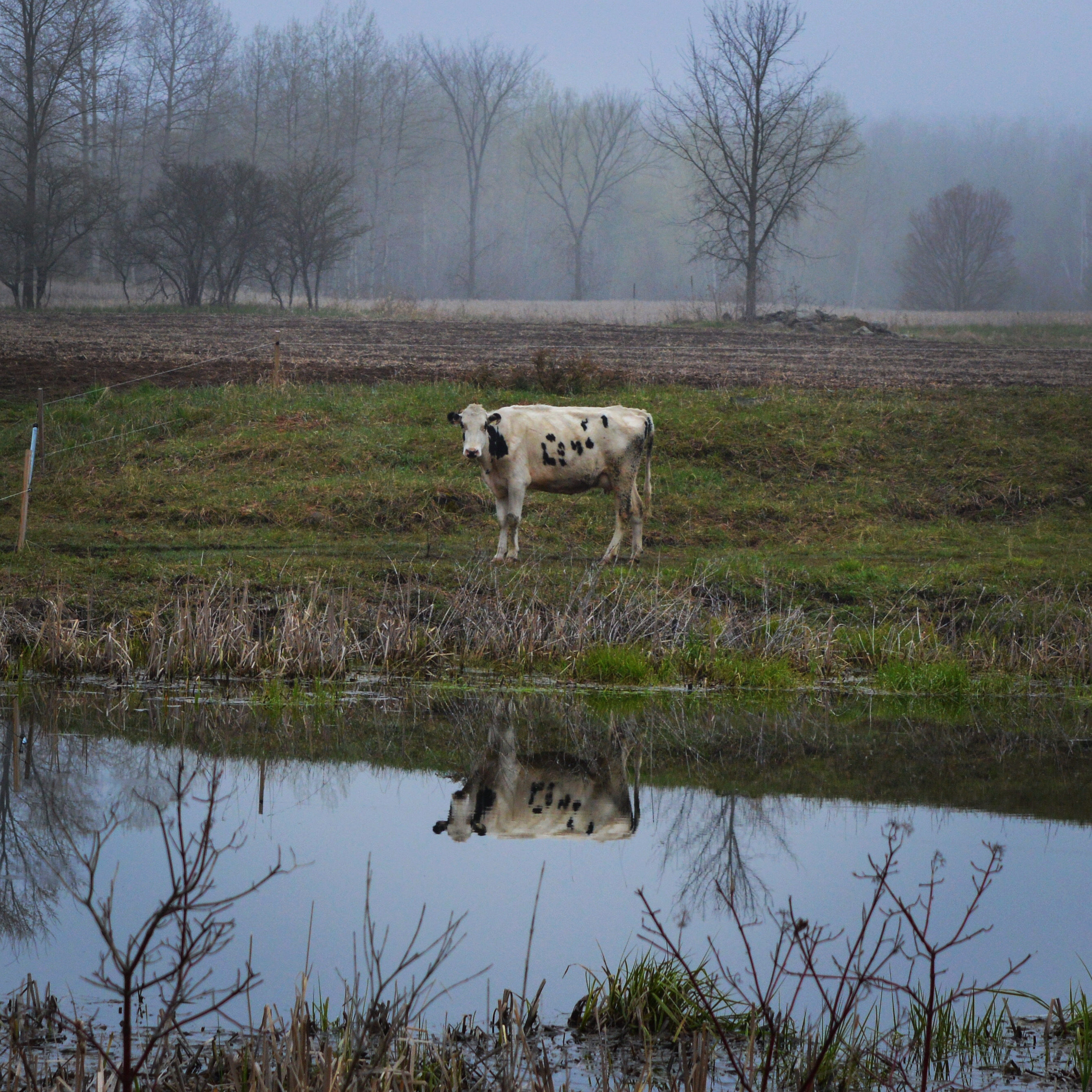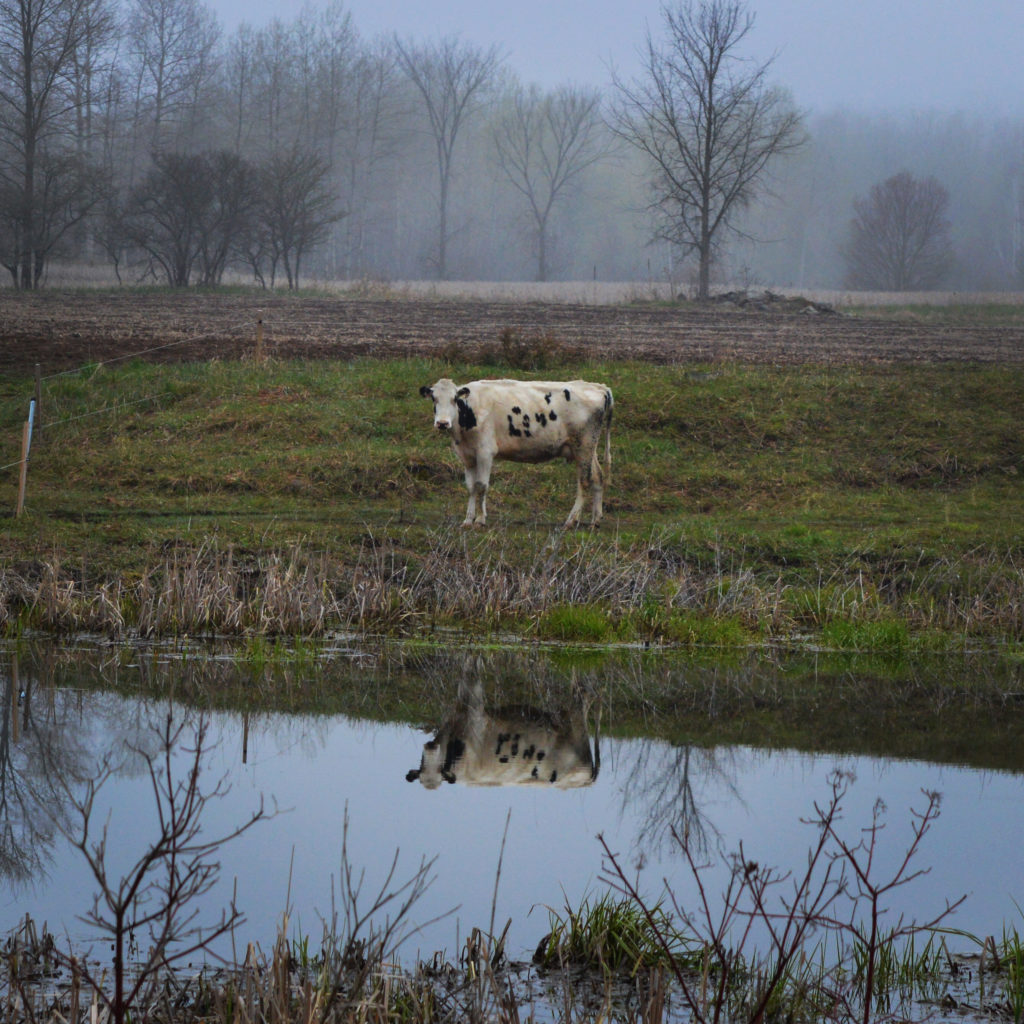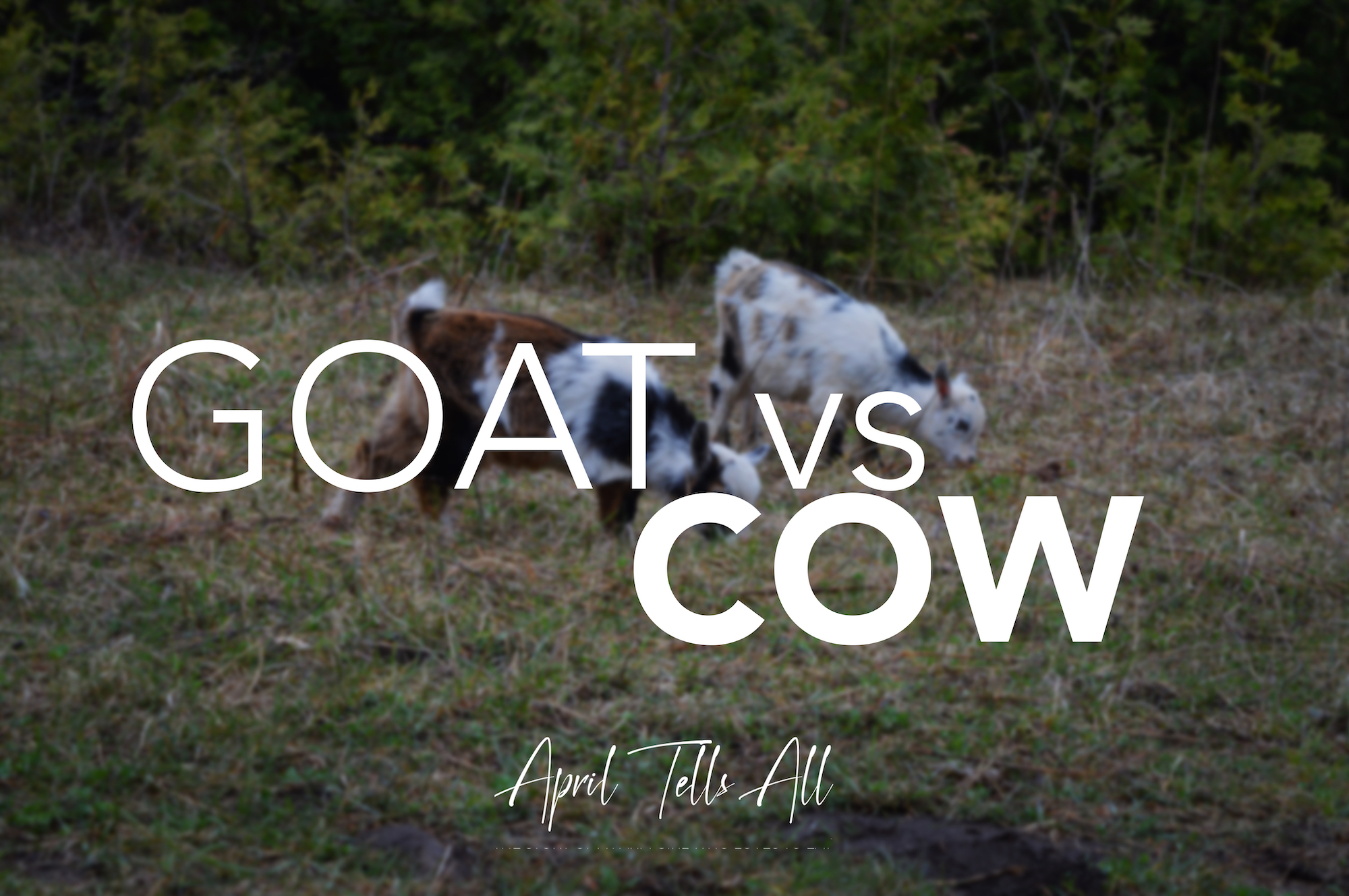I think I need to revisit my last post, which was written somewhat sarcastically (but with several nuggets of truth sprinkled throughout).
First of all, no animal, especially a first-timer, wants to be milked. This has been true for my goats and now for cows.
Expect some kicking and fussing. That is normal. Thankfully I did have years of hand milking experience under my belt and I do suggest starting with a goat, unless you’re really confident. They aren’t nearly as intimidating when they kick.
But, when all has settled into a routine having a family cow is an amazing thing.
Ah-mazing.
Our current milk cow’s name is Massey. (It’s a long story. In short my husband named her. I didn’t argue. Pick your battles ladies!)
Massey is a two year old Holstein cow, who had her first calf in March. When she first started bagging up, before delivery, I would comment on the size of her teats. They were massive. I was too new and green around the gills to recognize what was actually happening was edema. I thought her bellybutton sticking out was because she was massively pregnant. Wrong again ol’girl. That too was edema.
Massey presented with one of the worst cases I have ever seen. After finally realizing what was happening and scouring the internet for answers, and looking at many pictures I did not see one as bad as hers. Unfortunately I was so in the moment I never thought to take pictures of her udder. I felt horrible for letting her get into that condition. When she finally calved she rejected the calf instantly which left it up to us to milk this crazed animal out. The edema had her teats so swollen it took an hour per quarter to milk her out by hand. Combined with sub-clinical ketosis, I had a hot mess of a cow on my hands. This is why we had such a horrible first few weeks with her.
The edema cleared after a week. I heavily used a mint udder balm on her, and changed up her feed until I found a carb:protein mix that seemed to work well for her, bringing her out of ketosis. She is fed a mix of corn, oats, and alfalfa during milking time.
[wp_ad_camp_1]
In hind sight we had a lot of luck going for us. We learned very quickly and will be highly prepared come next year. My greatest fear was mastitis, but thankfully she never developed it. I monitored her pH levels like an overprotective parent watches their child at the park.
Today, things are much better.
Massey is like a good business partner. She expects routine and schedule, and if we hold up our end she holds up hers. Every day just after 4 pm she will be waiting for us. If we’re late she gets upset and can be a bit sassy.
Because she is a holstein we use a machine to milk her out. Massey gives us about 3.5 gallons per day. We only milk her once per day. We also don’t push her for production so she isn’t heavily grain fed. She could easily give us close to 10 gallons if we milked twice a day and heavily fed her, but sweet lordy who needs all that milk!
Holsteins are not the typical homestead milk cow. Most cattle people I’ve talked to don’t have good things to say about holsteins, but honestly I love her. Her nature is very easy going, she was easy to halter break, she does extremely well with routine (aka doesn’t try to shake things up, like a jersey I know cough Ferguson! cough), and her height means we actually have room to work under her. Our jersey, Ferguson, seems a bit short after working with Massey.
Her milk is also very sweet and she gives us enough cream to make butter, cheese, ice cream, or whatever else my little heart wants.
And at the end of the day, all my little heart really wants is butter.
Lots and lots of butter.
But we’ve know that since the beginning, haven’t we?
The number of years I wrote on this blog about someday owning a milk cow for all that glorious cream and butter is an ongoing reminder that despite all the work and stress (and bruises) that came with it, Massey really is a dream come true.
Amen.








